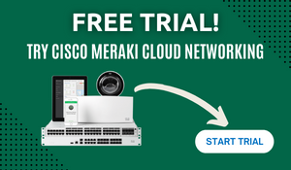
There's a well-known issue with installing new technology within a school district, and that's having the expertise required to go along with it.
A new WiFi rollout doesn't stop when the access points are hooked up and everyone has an IP address. That's when the users start using the network, and technical support issues begin immediately cropping up...bogging down the WiFi helpdesk. Some will be unavoidable glitches in a new rollout, but others will simply come from users who don't know how to use the new system.
A well-planned school WiFi system can minimize these issues by making the changeover as seamless as possible, but they will still come up.
This, in turn, means increased demands on someone to provide technical support and guidance to people trying to use the system. Possibly many "someones" as in many people. If it's someone internal to the school, they'll have to balance this role with their other duties.
So, how can you minimize the amount of inconvenience and money spent resolving WiFi technical issues? We've got a few ideas.
 Spend Less Time Supporting Your In School WiFi
Spend Less Time Supporting Your In School WiFi
1 - Use the simplest possible network setup.
There are times and places for highly complex network architectures, but a school is likely not one of them. User-friendliness needs to be a top priority, since this system is going to be shared by admins, teachers, students, and family.
This one of (several) reasons we tend to recommend Meraki's cloud managed hardware to schools, both primary and secondary. Network access and management truly is as simple as connecting to an AP.
Meraki tends to be one of the single easiest network architectures to maintain and support, because of this. Through the Meraki Dashboard a single person can oversee the day-to-day network operations with very minimal interaction needed.
2 - Publicize your network policies.
Your school should have an easily-accessible list of Dos and Don'ts for your school network, including a description of what sites are blocked from access. If you use a commercial "blacklist" program to filter inappropriate sites, include a link to the list vendor for interested parents.
Many helpdesk calls boil down to people violating (or at least misunderstanding) school rules regarding network usage. Making these policies clear will cut down on unnecessary calls.
3 - Use a quality web portal / cloud host.
When most schools install a new WiFi or other network, they also install new software to allow access to it. This facilitates Student Management Software packages, and the sharing of services between staff and families alike.
This isn't a place to skimp. The better-designed and more intuitive your online tools are, the fewer calls you'll have to deal with. In fact, this can be a proactive measure to reduce non-technical calls.
If your website, for example, contains a form for changing official residences that's easy to find and use, that's going to vastly reduce the number of calls into the office reporting address changes. A well-designed website will significantly reduce administrative burdens.
 4 - Consider an off-site HelpDesk service.
4 - Consider an off-site HelpDesk service.
Many don't realize this, but the world of outsourced technical support has changed dramatically in the last few years. It's now easy and affordable for virtually any organization to contract a professional support group for a small fraction of what it would cost to hire dedicated internal experts.
Beyond simply providing HelpDesk services, these groups can often manage your entire network remotely and take all the administration off your hands. In some cases, these services can even come bundled with the purchase of network hardware support packages.
For many schools, this is the best route to network upgrades: They get the tools and equipment they need, without needing extensive training or expert technicians on-site.
Want to learn more? Hummingbird Networks is one of the premiere network partners for schools and universities. Contact us today to learn how you can quickly renovate your entire network, and save money in the process.










